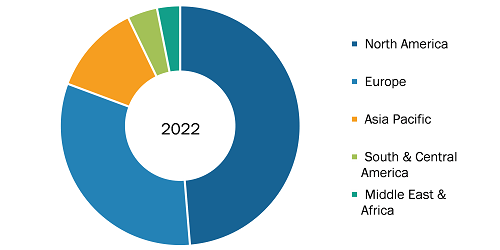
Teleradiology Services Market
Promising 5G Technology Act as a Trend for Teleradiology Services Market Growth
Telemedicine requires a network supporting high-quality videos while remotely monitoring patients in real-time. Using 4G or older networks for transferring larger files between departments can be time-consuming, forcing physicians to spend their valuable time waiting for the file transfer process to complete. Upgrading to 5G can eliminate these blocks and provide healthcare providers with a more effective network that can continue to adapt to new technology. 5G is the next generation of wireless technology that benefits all devices operating in a network by providing higher bandwidths, faster speeds, and greater capacity to connect devices. 5G technology offers 100–2,000 times faster speed than typical hospital wireless networks, as it allows for quick data transfer even for large data sets (i.e., low latency), which will help medical device connectivity work faster—remote patient monitoring aided in the proactive management of chronic diseases and the delivery of healthcare services. Healthcare experts increasingly recognized the value of medical device connectivity. As a result, the future of healthcare information systems is shifting toward digital data services. For example, EHRs, smart clinical, and administrative systems, and patient data portals are transforming the medical field to allow extraordinary access to care and interoperability among patient medical records. Due to the various benefits offered by this technology, 5G is the best candidate to enrich cloud-based services and expand the offering of connected solutions. As 5G wireless connectivity expands what is possible from connected medical devices, care providers can treat more patients and assist underserved patients worldwide. It means a world of care accessibility for patients that was once impractical.
Wireless technology enables connectivity among devices in the hospital, at home, and wherever a point of need arises. 5G-enabled wearable devices can transmit large data packets throughout the day, driving improved patient outcomes through continuous remote monitoring. Thus, with increasing medical device connectivity usage, the need for a better network and technology also arises, and 5G is one such technology that is likely to offer growth opportunities to the market during the forecast period.

North America held the largest share of the global teleradiology services market in 2022 owing to the technological advancement of the products for proper imaging and early diagnosis and funding from strategic and private equity investors for product development. Teleradiology has emerged as a potential solution, with small stroke experts guiding local emergency physicians through a thorough neurological exam, imaging review, and management decisions. According to IntechOpen, stroke is the fifth leading cause of death in the US, with one stroke occurring approximately every 40 seconds and stroke-related death occurring roughly every 4 minutes. Teleradiology networks use digital technology for two-way, high-definition video teleconferencing to bridge these differences by providing safe, efficient, and affordable care to underserved communities across the US.
Teleradiology networks, such as traditional practices, must comply with the Health Insurance Portability and Accountability Act (HIPAA), which regulates the protection of health information in the country. The increased use of teleradiology nationwide provides more extensive access to acute care expertise without delay and helps fill gaps in regional access to stroke care. Investments in improving care systems have been successful, and improved access to expertise and healthcare for patients remote from centers of expertise can be seen. With the increasing adoption of teleradiology, it is estimated that 96% of the US population has received optimal care, which is remarkable given the country’s geographic spread.
As telemedicine acceptance increases, the importance of building cohesion among physicians in telemedicine teams also flourishes. Additional government regulations regarding privacy, confidentiality, and patient rights apply in the country, and these may go beyond the existing requirements for general medical interactions. Thus, the factors as mentioned earlier are estimated to propel the teleradiology services market growth in the US during the forecast period.
Canada is the second-largest market in North America for teleradiology services. The medical device industry in Canada is rapidly developing, thus enabling the best research opportunities for professionals. Due to the prevalence of diseases and infections in Canada, teleradiology services are being largely opted for timely treatment. According to the latest Global Burden Disease Study published in October 2020, Canada faces a high burden of cancer, heart disease, kidney disease, and infections. Additionally, in 2021, the Canadian Cancer Society reported that cancer remains the leading cause of death in Canada. It is estimated that every two in five Canadians will be diagnosed with cancer in their lifetime. Thus, the increasing burden of diseases such as cancer and growing initiatives by various
organizations in Canada for early diagnosis of diseases are driving the growth of the teleradiology services market.
Teleradiology Services Market: Competitive Landscape and Key Developments
Aster Medical Imaging LLC, RAYUS Radiology Services, ONRAD Inc., medavis GmbH, Real Radiology LLC, Teleradiology Solutions Inc, Vital Radiology Services, Envision Healthcare Corp, Telediagnosys LLC, and Agilus Diagnostics Ltd are a few key companies operating in the teleradiology services market. Market players adopt product innovation strategies to meet evolving customer demands, maintaining their brand names in teleradiology services.





